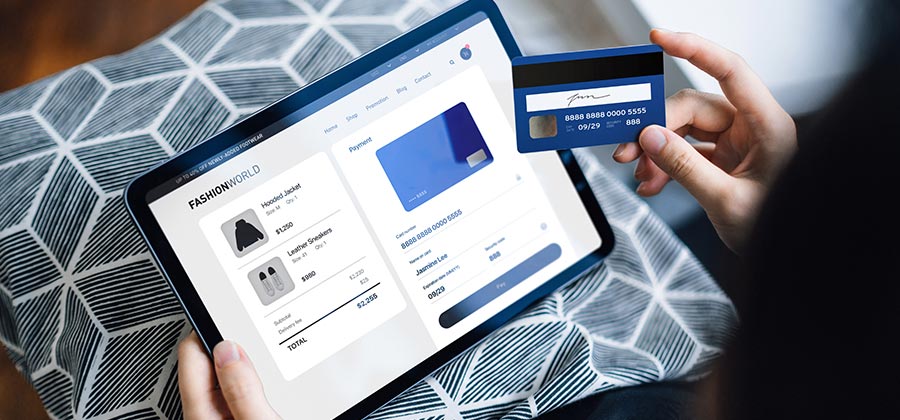How hyper-personalization will create a consumer ‘segment of one’

For many years, marketers have promised that technology can use consumer data and purchasing habits to create supercharged, personalized deals and offerings for consumers, with mutual benefits to companies and consumers.
Initial efforts at customization, through tactics like loyalty programs, have yielded impressive results: using personalization can reduce customer acquisition costs by as much as 50%, lift revenue by 5%-15%, and increase marketing ROI by 10%-30%.
Now, with the rise of generative AI, many observers are saying 2025 is the year when companies go one step further and fully realize the benefits of hyper-personalization.
Citi Ventures has been following and investing in this trend for years, and we are excited by a new crop of startups innovating in this space and delighting the next generation of consumers.
The expanding hyper-personalization market
Companies have gradually transitioned away from mass marketing approaches, focusing more on the needs of the individual versus the needs of the group. Hyper-personalization, using AI, takes things one step further, incorporating data and advanced machine learning to create individualized offers.
In this model, each consumer becomes a “segment of one” with AI creating highly relevant, tailored experiences based on their identity, purchase history and current interests.
The hyper-personalization market, which includes AI model developers, data managers and service providers, is forecast to hit $42 billion in 2028, up 90% from $22 billion in 2024. A big driver of that growth comes from e-commerce, where investments in AI climbed nearly 25% in 2024, to $9.01 billion from $7.25 billion. That figure is poised to hit $64.03 billion by 2034.
Another growth catalyst is the desire among companies to build more personalized customer offerings, such as content and insights. Working with startups and other service providers, companies are incorporating user data to create individualized customer journeys in real time.
Startups in the hyper-personalization space
A host of startups are driving AI-powered innovation to hyper-personalize different components of the overall consumer experience. These include:
- Fetch analyzes customer receipts to help brands create personalized offers based on previous purchases. For example, a company could send a customer an individual reward when they try a new yogurt flavor. Fetch already works with major consumer packaged goods companies to offer these targeted promotions.
- OfferFit uses a type of machine learning and automated experimentation to create personalized offers and incentives in real time, effectively replacing traditional A/B testing. The company’s Gen AI dynamically tests various messages, incentives, timing and communication channels, learning what drives each individual consumer engagement. OfferFit continually adapts strategies at scale, optimizing offers down to the individual consumer. The company has attracted enterprise adopters, highlighting robust demand for scalable, AI-driven personalization.
- Monocle employs predictive AI models to proactively deliver hyper-personalized promotions and incentives. Rather than reactively responding to a customer’s actions, Monocle anticipates future behaviors and strategically places offers throughout the purchasing journey.
- Badge offers contextualized mobile marketing via digital wallet integrations, capitalizing on native phone features like geolocation and proximity-triggered notifications. Badge enables marketers to deliver hyper-relevant loyalty offers precisely when customers are near stores or specific locations, without requiring customers to download standalone apps.
- Pinch brings hyper-personalization into the post-purchase stage of e-commerce. The platform uses AI to tailor return and refund policies based on individual consumer behavior, loyalty level and previous interactions. Trusted customers may receive instant refunds, extended return windows and special perks, while higher-risk customers experience stricter return terms. Pinch helps retailers manage return costs while improving satisfaction and loyalty among their best customers.
Challenges ahead
While creating hyper-personalized deals and experiences through Gen AI seems straightforward, there are a lot of moving parts in the process that could delay, or even prevent, certain use cases from being realized. For example, many companies will need to invest in new data collection systems, then figure out how to integrate that data, to make sure they can reap quick and usable consumer insights, while protecting their relationship with their customers and their customers’ personal data, and managing regulatory and reputational risks with thoughtful application of new and emerging technologies.
- Data ownership and quality: Consumer data, such as demographic information and purchase history, is not housed in any one place. Instead, it lives across many websites and social media platforms, each with its own data sharing and ownership policy. Some companies may not want to share data, while others may limit what they are willing to provide. Once data is shared, the next challenge is building one comprehensive data set, which is no small feat. There is also the issue of data quality: is what you’re getting accurate? And how do you prevent collected data from going stale? Creating and maintaining data quality is probably the most important enabler of efficient AI – without it, the promise of hyper-personalization could go unfulfilled.
- Privacy: Major regulations such as the General Data Protection Regulation (GDPR) and the California Consumer Privacy Act (CCPA) protect consumer data and ensure that people consent to digital platforms tracking their online activities. If enough people opt out of data collection, then hyper-personalization could become a more burdensome effort.
- Too close for comfort? Gauging consumer comfort around hyper-personalization will be an ongoing process, with the hope that people do not get turned off by receiving offers that seem “too personalized.”
- Avoiding bias: Diverse data on the purchasing habits of all types of people will be crucial to the success of hyper-personalization. Limited, or narrow, data sets will minimize the impact of what Gen AI can offer.
Opportunities for companies and what’s next
The opportunity to dig deeper into customer data and serve up more targeted engagements with the help of Gen AI is a compelling one. We expect to see many e-commerce retailers take the next steps in their journeys by partnering with AI-based startups that can help them offer personalized discounts, customized return policies and other targeted incentives designed to get shoppers to click “Buy Now” and come back for more.
Companies will need to make sure they have relevant, diverse and accurate data – and come up with data management processes – to maintain consumer privacy.
If they can overcome these technical challenges, perhaps with the help of the startup ecosystem, then they are likely to make the promise of hyper-personalization a reality. If you are building something that is pushing the boundaries of hyper-personalization in commerce, we would love to hear from you—please reach out!
For more information, email Jelena Zec at jelena.zec@citi.com or Robert Li at robert.li@citi.com.
Learn more about Citi Ventures on our website.

